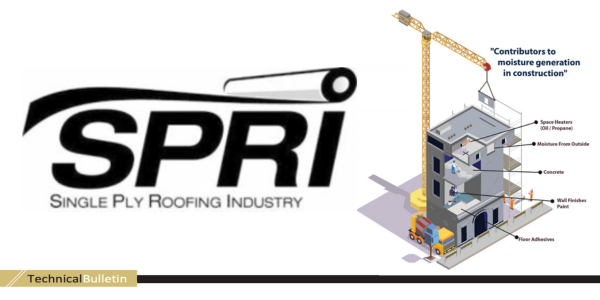The importance of addressing construction-generated moisture

By Chadwick Collins, SPRI.
Avoid long-term issues like mold by mitigating the amount of moisture naturally created on the jobsite.
Moisture is a critical factor to consider when doing any new construction or extensive, large-scale renovations. If this factor is not taken into account during the construction itself, it can lead to issues such as performance and longevity down the line. One of the contributors to moisture in these situations is the construction itself. The experts at Single Ply Roofing Industry (SPRI) have created a technical bulletin to address this issue and how construction teams can accommodate this in their processes to avoid further complications.
In general, construction-generated moisture can often go unnoticed or ignored during the installation process. However, it will become clear as time passes. In warm and hot climates, it often displays itself as musty air later, or in extreme cases when mold growth is discovered. Alternatively, in colder climates moisture may first look like water droplets after a freezing and thawing cycle. This can often lead to misinterpretation of the issue as a rood leak.

This type of moisture is associated with all sorts of work, both across the industry in a variety of different trade fields. According to a 2006 manual by Griffin and Fricklas, a single four-inch-thick concrete slab that is poured in an enclosed building can generate up to 240 gallons of water per 1,000 square feet. Whether it is warm or cold, this moisture buildup cannot be left unattended. SPRI recommends that new constructions and renovations with elevated levels of construction-generated moisture implement remediation plans that allow them to accommodate, dissipate or completely avoid large amounts of moisture.
Learn more about SPRI in their Coffee Shop Directory or visit www.spri.org.





















Comments
Leave a Reply
Have an account? Login to leave a comment!
Sign In